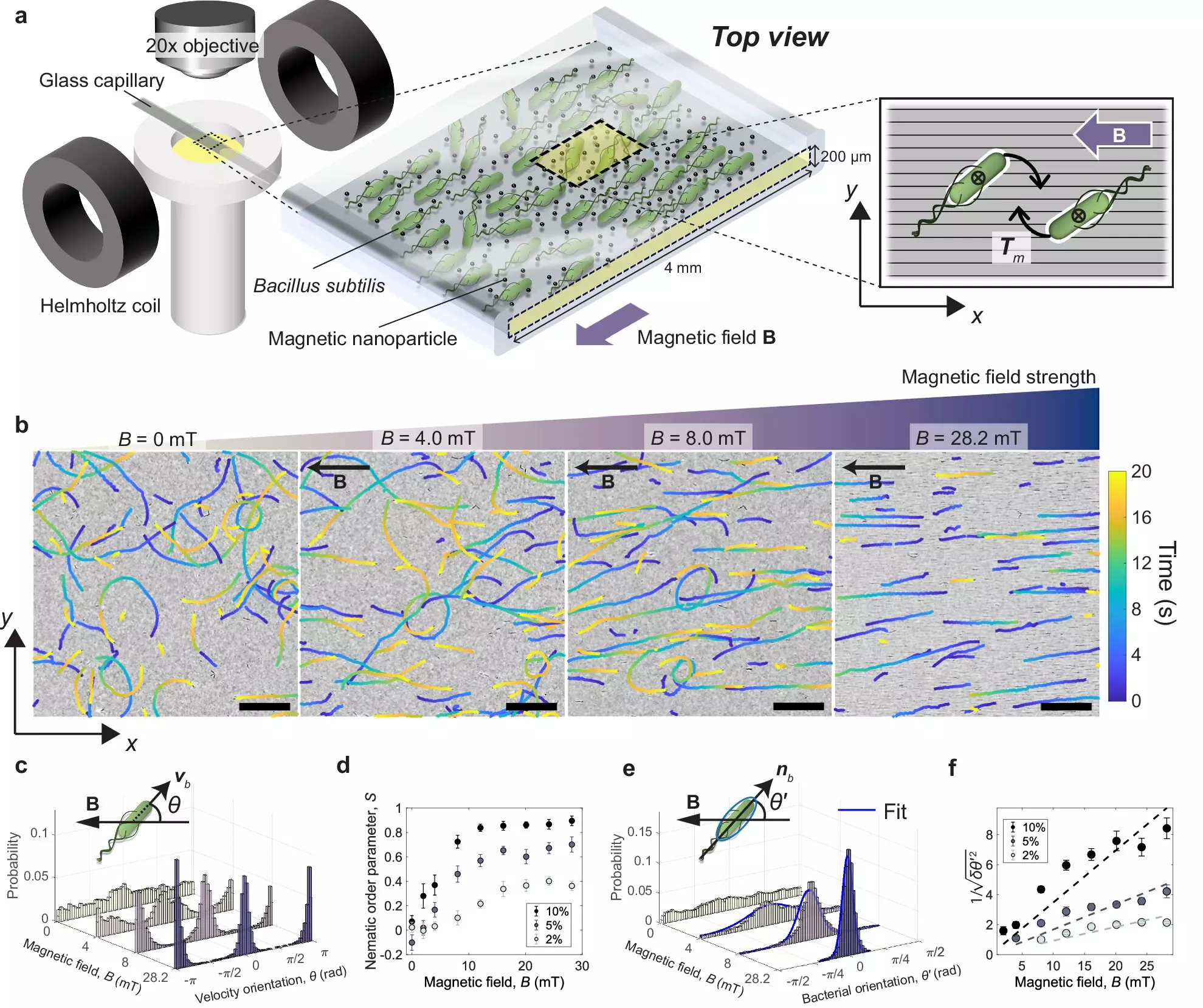Aalto University scientists in Finland have discovered a groundbreaking method to manipulate the alignment of bacteria using magnets. This revolutionary approach not only allows for the organization of bacteria but also opens up a myriad of possibilities for research in various fields, including complex materials, phase transitions, and condensed matter physics.
Unlike magnetotactic bacteria, the rod-shaped bacteria used in the study are not inherently magnetic. Instead, they are mixed into a liquid containing millions of magnetic nanoparticles. When magnets are activated, creating a magnetic field, the bacteria are compelled to align with the field due to the energy-efficient nature of this arrangement. This phenomenon results in the bacteria swimming in nearly perfect rows, controlled by the strength of the magnetic field.
The density of bacteria in the liquid plays a crucial role in their alignment behavior. High population density requires a stronger magnetic field to overcome the turbulence-like effect caused by the swimming bacteria. This effect, known as active turbulence, is a common occurrence in nature and is characterized by dynamic movements of individual units creating patterns similar to turbulent flows.
Implications for Research and Applications
The ability to control bacterial movement and align them with turbulent flow has significant implications for understanding and manipulating active matter. This newfound control can be applied to a variety of fields, from self-sustaining materials to microrobotics and targeted drug delivery on a microscopic scale. The researchers believe that this method can advance the study of active matter and lead to innovative solutions in diverse areas.
Future Directions
The researchers intend to further explore the possibilities of their method by investigating the effects of dynamic magnetic fields, such as rotating magnetic fields. This exploration could provide insights into more complex behaviors of bacteria and lead to new discoveries in the field of active matter physics.
The utilization of magnets to control bacterial alignment represents a significant advancement in scientific research. By harnessing the power of magnetic fields, researchers have unlocked a new realm of possibilities for studying and manipulating active matter. This innovative approach not only expands our understanding of bacterial behavior but also offers promising applications in various fields, paving the way for future advancements in scientific discovery.


Leave a Reply
You must be logged in to post a comment.